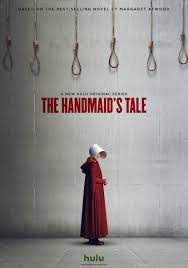The Handmaid’s Tale: Dystopia and Women’s Rights in Focus

Introduction
The Handmaid’s Tale, a dystopian novel by Margaret Atwood, has emerged as a significant cultural touchstone in recent years. Originally published in 1985, the narrative explores a chilling vision of a totalitarian society that subjugates women. As global discussions surrounding women’s rights, reproductive health, and personal autonomy intensify, the themes present in The Handmaid’s Tale continue to resonate powerfully with audiences. Its adaptation into a critically acclaimed television series has further cemented its relevance in modern discourse.
Overview of The Handmaid’s Tale
The story is set in the Republic of Gilead, a dystopian future where environmental disasters and declining birth rates have led to the establishment of a regime that enforces strict social hierarchies based on gender. Women are categorised into roles such as Wives, Handmaids, and Marthas, with Handmaids being forced into childbearing for the ruling class. The protagonist, Offred, navigates this oppressive world, shedding light on the extreme measures used to control women through reproductive means.
Current Relevance and Adaptation
The Handmaid’s Tale has seen a resurgence in popularity, particularly with the release of its television adaptation in 2017. The series has garnered numerous awards and has been praised for its striking visual storytelling that brings Atwood’s vision to life. Furthermore, its release coincided with various political movements advocating for women’s rights, including the Me Too movement and protests against restrictive reproductive legislation in various countries.
The analogy of Gilead’s oppression has been frequently referenced in protests and discourse, as many see parallels between the fictional world and contemporary battles over women’s autonomy. Social media campaigns have utilised imagery and quotes from The Handmaid’s Tale to highlight issues such as forced birth and bodily autonomy, drawing important connections between the narrative and real-world events.
Conclusion
The Handmaid’s Tale remains a poignant reminder of the fragility of freedom and the ongoing struggles for women’s rights around the globe. As the fight for gender equality and personal autonomy continues to be challenged, Atwood’s narrative stands as both a warning and a call to action. The cultural impact of The Handmaid’s Tale is likely to endure, resonating with audiences as societal circumstances evolve. This highlights not only the book’s literary significance but also its role as an essential component in the discourse surrounding feminism and human rights in our contemporary world.







